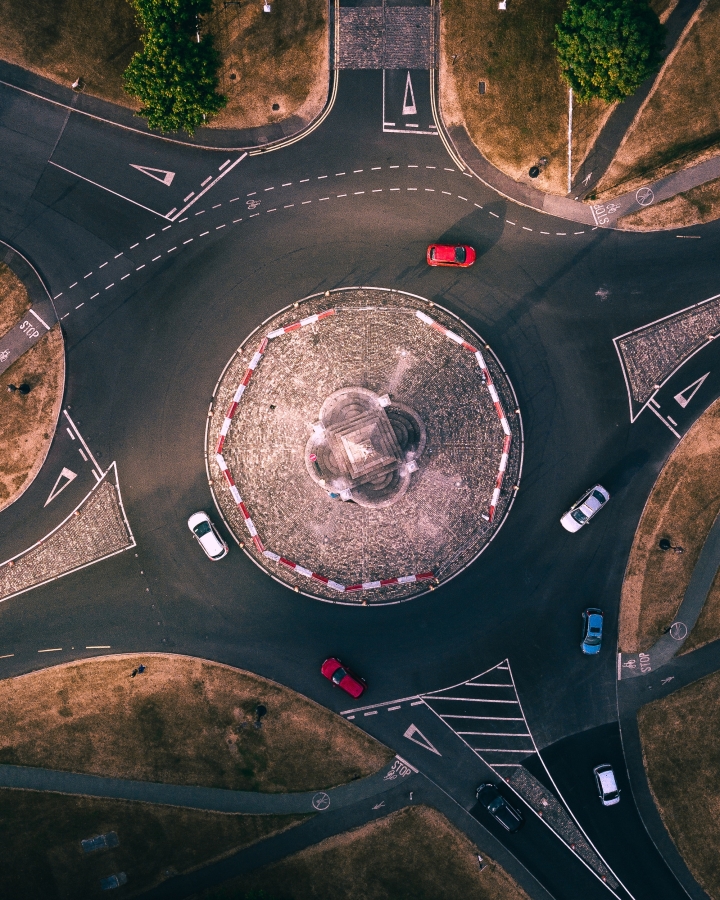It wasn’t until the early 1900’s that Roundabouts started making their way onto North American roadways and now they seem to be gaining popularity – especially in the Lower Mainland and Fraser Valley. Currently, there are 33 roundabouts on BC’s provincial highway network so, chances are, you’ll find yourself navigating these circular junctions before too long, if you haven't already.
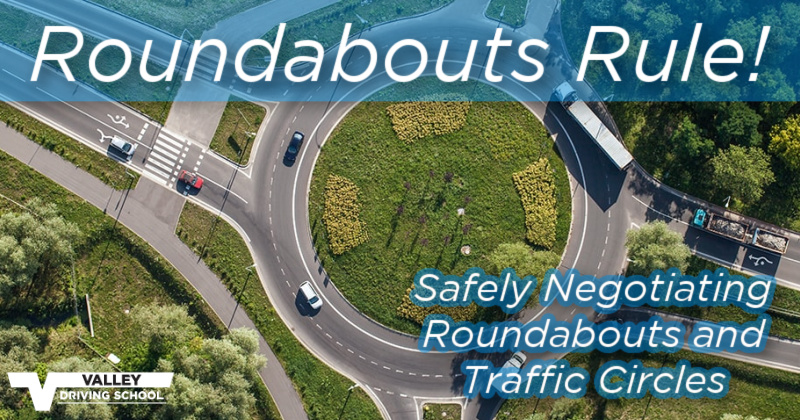
In this post, we will be discussing the rules and regulations regarding roundabouts.
History of Roundabouts
Roundabouts, also referred to as circular traffic junctions, have been part of the driving experience in many European countries as far back as 1768. A few of the most iconic roundabouts include “l'Étoile” in Paris completed in 1907. This roundabout has 12 different entry points and has about 12 lanes once you enter, but none of the inner lanes are marked so its hard to say how many lanes there actually are. Circling the Arc de Triumph, “l’étoile” is so big it can be seen from space and looks like a star – hence the name “l’étoile” which means star in French. There is also the “magic” roundabout in Swindon, England. Constructed in 1972 this junction has 5 mini roundabouts inside of the larger roundabout – good luck navigating that!
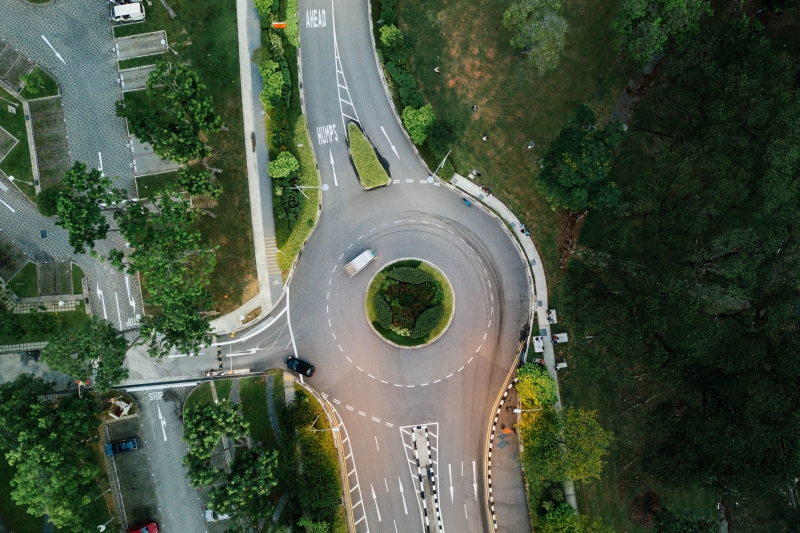
Function & Benefits of Roundabouts
Designed primarily to calm and regulate areas of high-traffic, roundabouts work by giving the right-of-way to traffic already within the circle. This allows incoming traffic to yield rather than coming to a complete stop, minimizing wait times and congestion. Because drivers entering the roundabout are travelling in the same direction (counter clockwise), modern roundabouts minimize the chances and severity of traffic incidents by decreasing speed and reducing the possibility of a T-bone or head-on collisions. By design, roundabouts are actually safer than our beloved light controlled intersections as they reduce the number of potential vehicle conflicts.
Roundabout Signage
Roundabouts have a unique set of signs in order to warn and prepare drivers for the maneuvers they want to perform. These signs are placed at different spots leading up to and in the roundabouts, to help navigate drivers through.
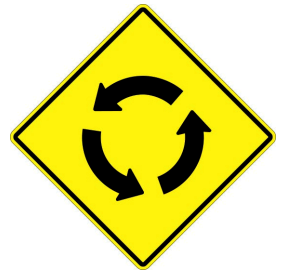
In advance of an upcoming roundabout you will see a warning sign alerting drivers of a roundabout ahead. In most cases, drivers will need to adjust their speed prior to entering the roundabout. This advanced warning sign may be accompanied by a speed recommendation.
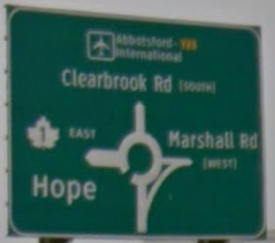 As discussed in our recent signs blog post, green background signs provide drivers with directional information and will help determine preferred routes. Green guide signs with a diagram of the upcoming roundabout will help direct you to your designated roadway. These signs are posted ahead of the roundabout and will also be posted above the entry point of the roundabout to re-confirm directives. Road names as well as a navigational direction may be listed.
As discussed in our recent signs blog post, green background signs provide drivers with directional information and will help determine preferred routes. Green guide signs with a diagram of the upcoming roundabout will help direct you to your designated roadway. These signs are posted ahead of the roundabout and will also be posted above the entry point of the roundabout to re-confirm directives. Road names as well as a navigational direction may be listed.
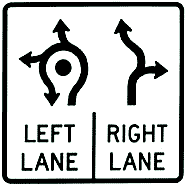 Lane use signs, either on the side of the road or overhead, direct drivers to which lane they need to be in depending on how they will be travelling through the roundabout. Often, these directive arrows will also be painted on the road, helping drivers determine what actions are permitted from that lane.
Lane use signs, either on the side of the road or overhead, direct drivers to which lane they need to be in depending on how they will be travelling through the roundabout. Often, these directive arrows will also be painted on the road, helping drivers determine what actions are permitted from that lane.
It is very important to select your preferred lane of travel BEFORE you enter the roundabout, as lane changes in the roundabout are very unsafe. Use the signs posted to plan your route and make any lane changes prior to entering the roundabout.
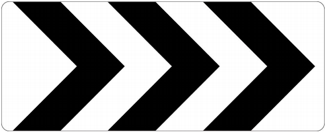 Just before entering the roundabout, this sign will be posted alerting drivers to enter and continue in a counter-clockwise direction.
Just before entering the roundabout, this sign will be posted alerting drivers to enter and continue in a counter-clockwise direction.
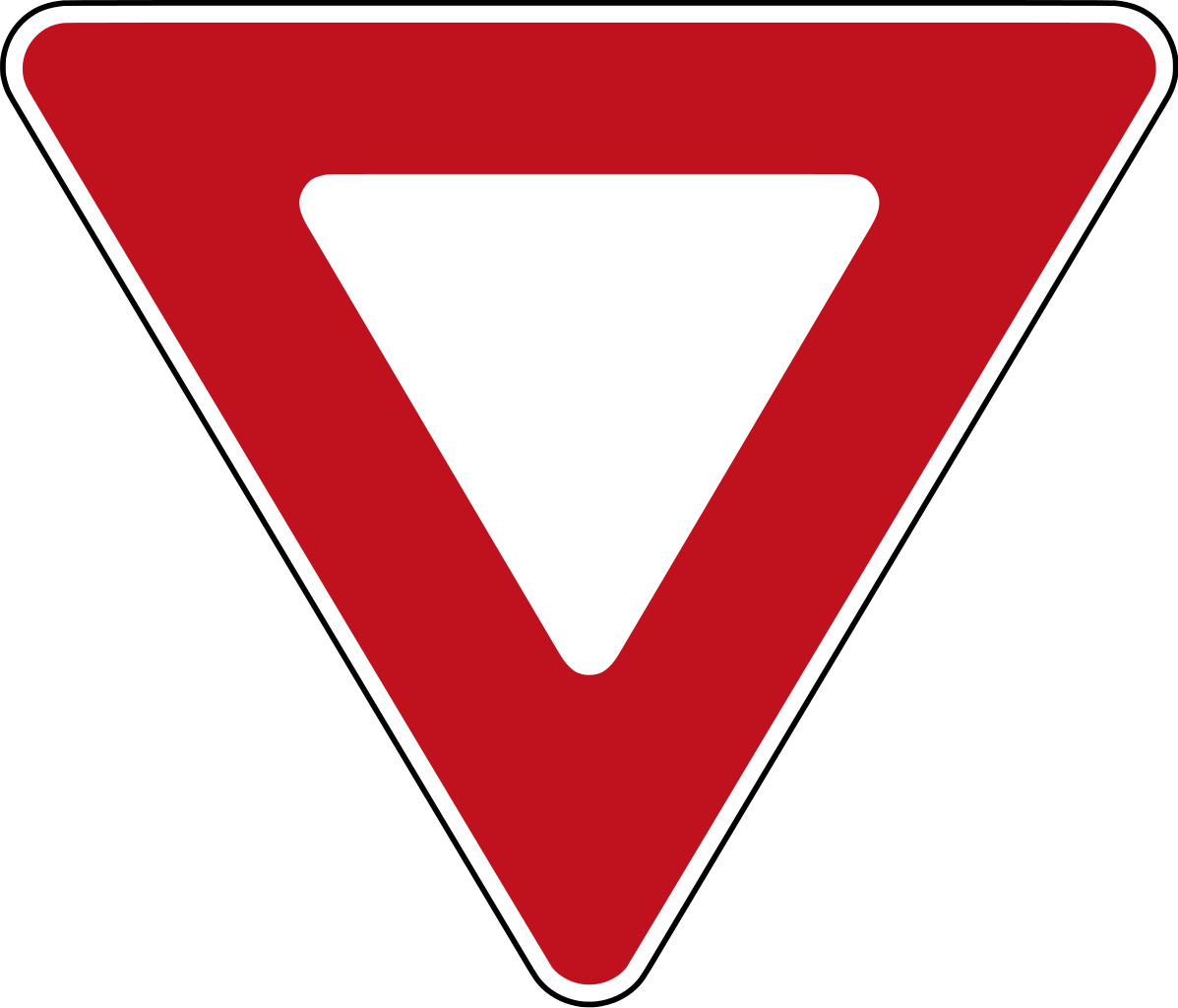
One of the most important principles of a roundabout is the yield principle. Drivers must yield to traffic already inthe roundabout as traffic in all lanes of the roundabout have the right of way. A complete stop prior to entering the roundabout is only necessary to avoid conflict with traffic already in the roundabout.
Drivers are also required to yield to any pedestrians or cyclists in the crosswalks that are part of the roundabouts. Drivers are expected to follow the same rules as any other crosswalk at a conventional intersection elsewhere and minding they don't block the crosswalk as they prepare to enter the circle.
Navigating a Roundabout
Once you are in the roundabout follow the directives painted on the ground or the directives given by the advanced warning signs to you intended exit. Do no stop or welcome other traffic to enter the roundabout in front of you, as this is very unsafe and will disrupt the flow of traffic in the roundabout.
Signal right, just prior to your exit. While you do not have to signal to enter a roundabout, signalling upon your exit is a clear method to communicate your intentions with other motorists as well as pedestrians who are around or using the roundabout as well.
(Credit: Global News)
Sharing Roundabouts with Trucks
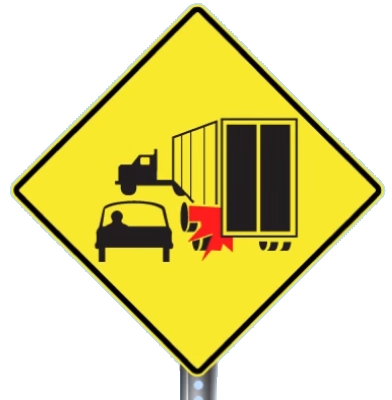
Some roundabouts have a raised or coloured apron around the center island of the roundabout, this is referred to as the ‘truck apron” and is to ensure longer and wider vehicles have enough clearance within the roundabout.
Many large commercial vehicles or tractor-trailer may need more than one lane to safely navigate a roundabout due to their large and long size. A semi-truck may “split lanes” - taking up both driving lanes leading up the roundabout and continue in both lanes as they navigate through. This ensures adequate room for the truck in the roundabout and will prevent other drivers from occupying the lane beside them. Never attempt to pass a semi-truck while in or leading up to a roundabout. Instead, give large vehicles plenty of room to safely maneuver through the roundabout. Stagger yourself either behind or in front of a truck prior to entering a roundabout – especially if you are in the left lane.
Other Road Users
Should an emergency vehicle approach, don't block its path in or outside of the roundabout. If you have yet to enter, pull over to the right before you continue into the roundabout. If you have already entered, continue to the next available exit point and pull over to the side of the road once you have exited the roundabout.
Neighbourhood Traffic Circles
Traffic circles are a smaller roundabout usually consisting of a single lane and are typically found in residential neighbourhoods. These are used for traffic calming purposes to prevent drivers from speeding. When entering a traffic circle, the same principles apply: obey any posted traffic control signs, enter in a counter-clockwise direction, yield to any traffic already in the circle, and signal “right” when exiting the traffic circle.
While roundabouts are growing in popularity in Canada, some regions still find themselves adapting to the roundabout way of life - most notably in Saskatchewan, where the first roundabout was completed as recently as July of 2017.
The process of learning and using a roundabout is all about communication, safety, and confidence. Building your knowledge on how to use roundabouts will ensure you can execute them properly and safely.

